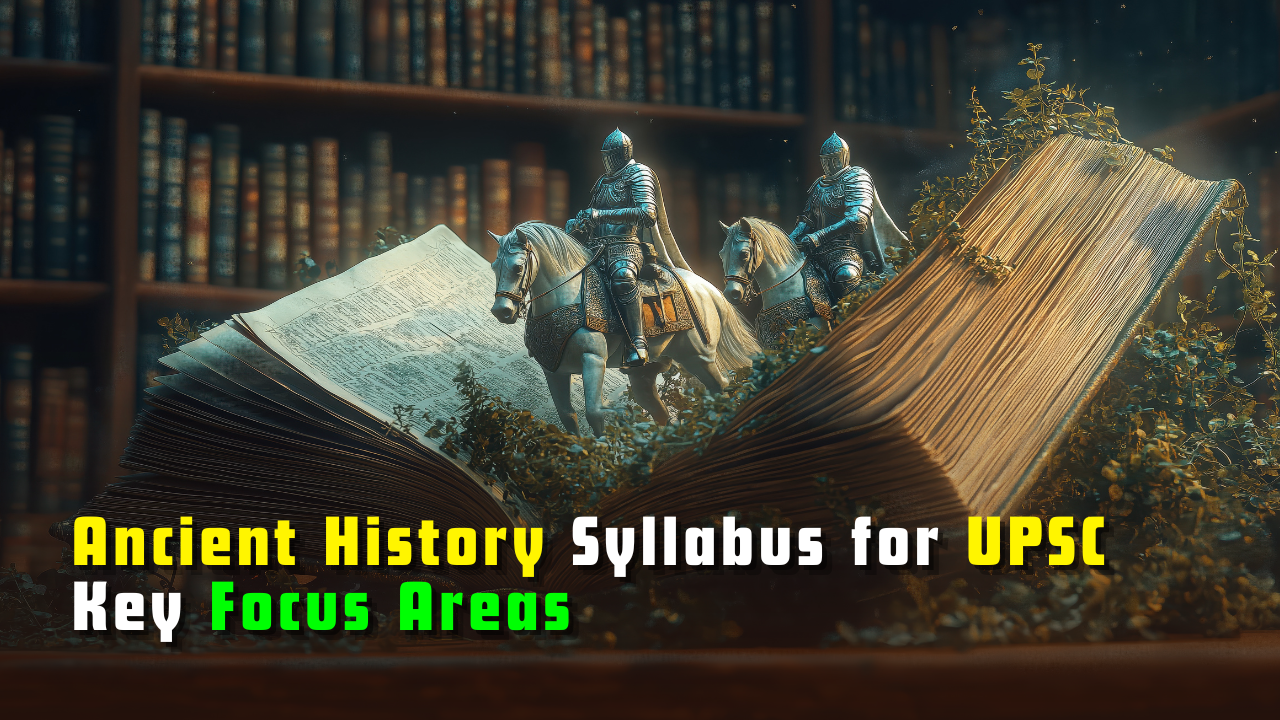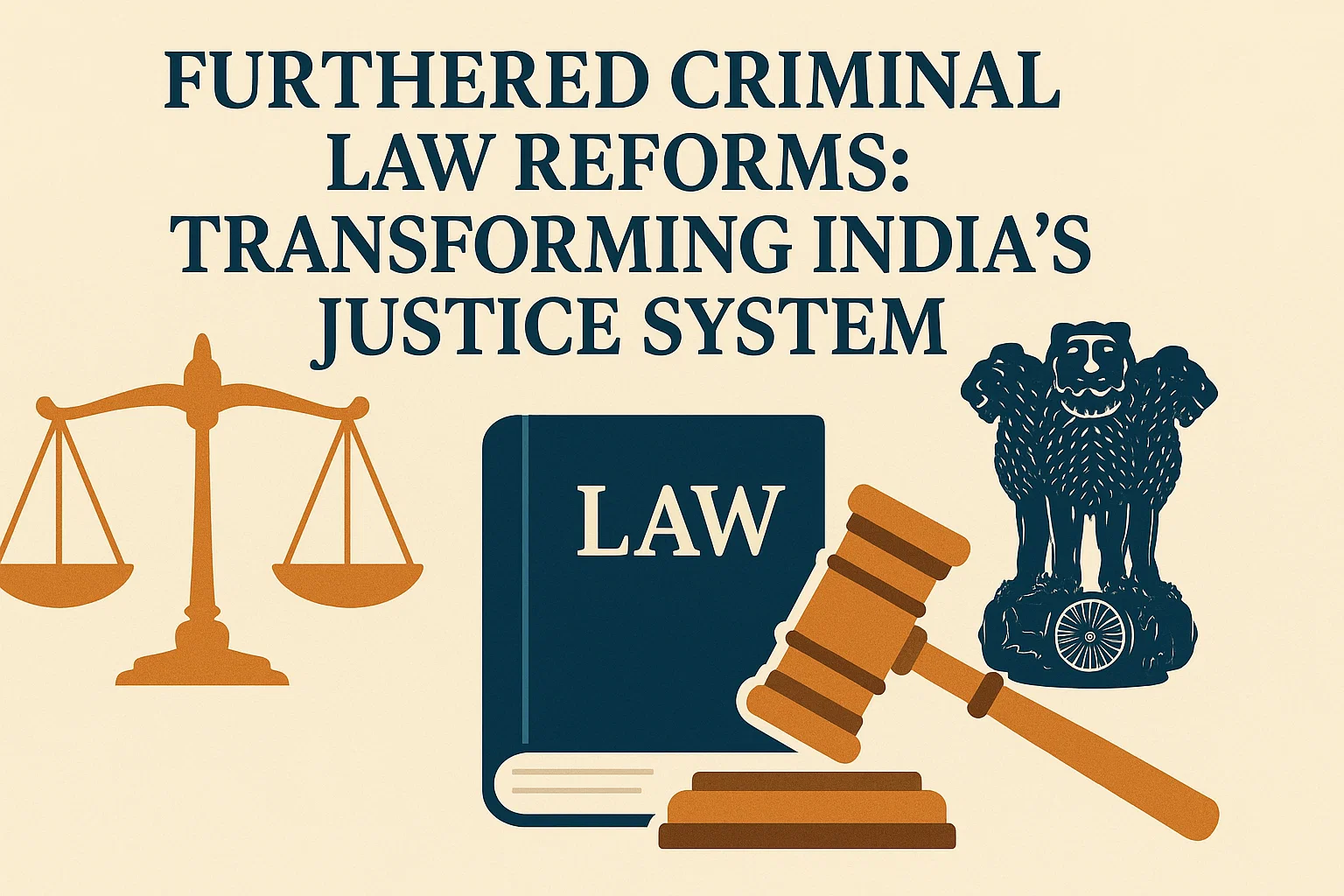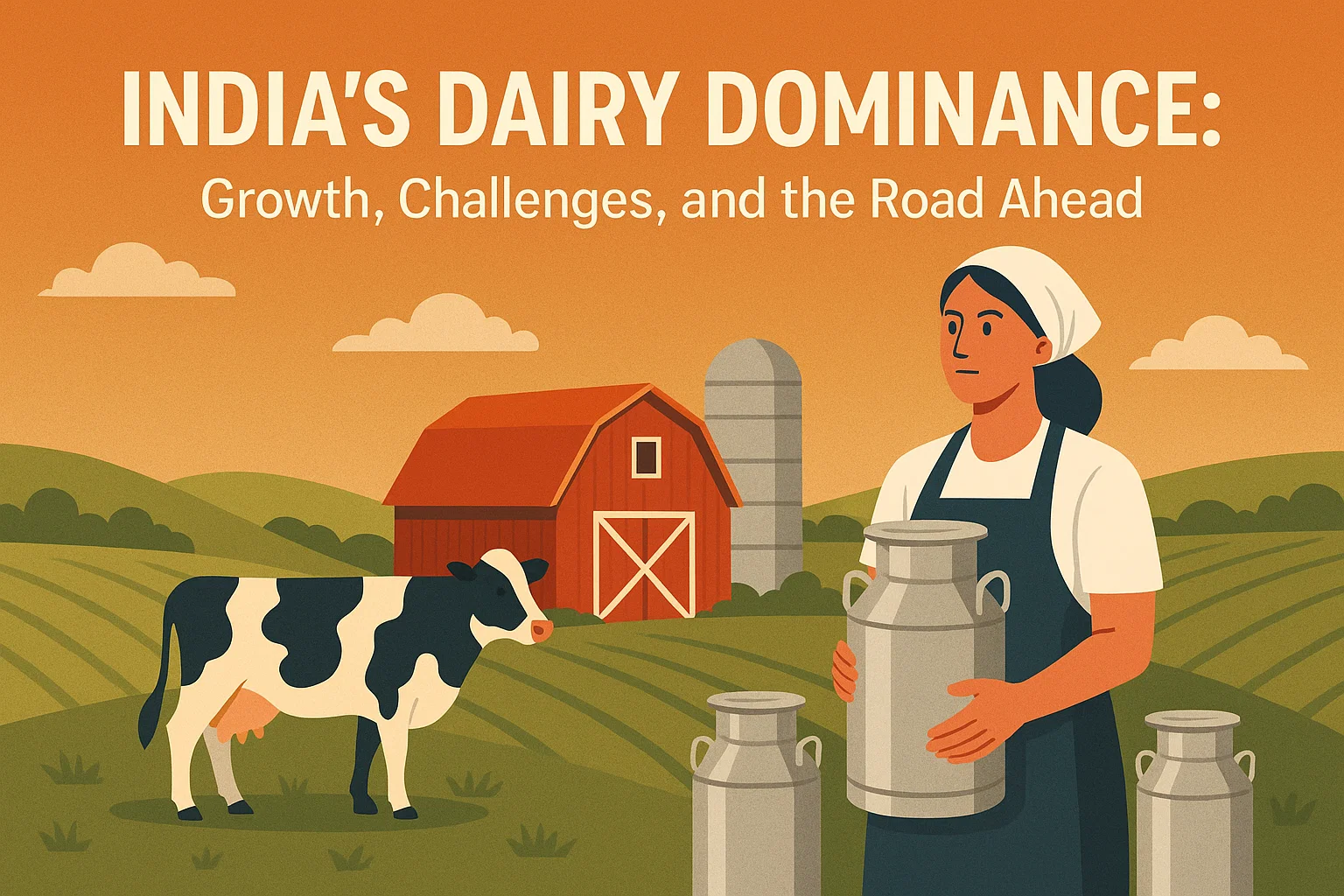Ancient History Syllabus for UPSC: Key Focus Areas
Ancient History Syllabus for UPSC: Topics, Strategy & Booklist for GS Paper I
Master the Ancient History syllabus for UPSC with this comprehensive guide covering key topics like Indus Valley Civilisation, Vedic Age, Mauryan Empire, Sangam Age, Gupta Era and more. Includes exam-oriented strategy for Prelims and Mains (GS Paper I), booklist, PYQ tips, and thematic breakdown—ideal for both Hindi and English medium aspirants.
Introduction
Ancient Indian history holds significant weight in both UPSC Prelims and Mains (GS Paper I). It offers insights into the evolution of Indian society, polity, culture, and economic life across millennia. Mastery of this section not only helps in scoring well in prelims but also strengthens answers in Mains, contributes to essay writing, and supports ethics papers by providing value-based historical perspectives.
Why Ancient History Matters
- Relevance in GS and Optional: It features in Prelims, GS Paper I, History Optional, Essay, and even Ethics.
- Helps Build Analytical Thinking: Studying ancient systems like Varna or Sabha-Samiti builds comparative frameworks for current affairs.
- Cultural Foundation: Understanding ancient India is vital for grasping India’s diverse heritage and identity.
- Essay Enrichment: Themes like unity in diversity, civilisation values, or governance traditions find support in ancient history examples.
Key Themes and Subtopics
1. Prehistoric and Protohistoric Period
- Covers periods from the Palaeolithic, Mesolithic, Neolithic, and Chalcolithic ages.
- Key areas include archaeological tools, human evolution, early settlements, and subsistence patterns.
- Important sites: Bhimbetka, Hunsgi, Burzahom, Mehrgarh.
2. Indus Valley Civilisation (IVC)
- Core themes: Urban planning, drainage systems, seals, trade practices, religious beliefs, and the undeciphered script.
- Study major sites: Mohenjodaro, Harappa, Lothal, Dholavira, Kalibangan.
- Understand the socio-economic structure and possible reasons for decline.
3. Vedic Age (Early and Later Vedic Periods)
- Sources: Rigveda and later Vedic texts.
- Society: Kinship patterns, Varna system, education.
- Polity: From tribal assemblies (sabha, samiti) to monarchical systems.
- Economy: Agriculture, cattle rearing, and trade.
- Religion: Vedic deities, rituals, and the emergence of philosophical thought.
4. Mahajanapadas and the Rise of Magadha
- Overview of the sixteen Mahajanapadas with focus on republics and monarchies.
- Emergence of Magadha as a dominant power under Haryanka, Shishunaga, and Nanda dynasties.
- Impact of external invasions: Persians and Alexander.
- Urbanisation and socio-political change.
5. Religious Movements: Jainism and Buddhism
- Life and teachings of Mahavira and Buddha.
- Core doctrines: Triratna, Eightfold Path, Four Noble Truths.
- Councils and schisms within both religions.
- Role of patronage in their expansion.
- Comparison with Brahmanical traditions.
6. Mauryan Empire
- Foundation by Chandragupta Maurya with help of Chanakya.
- Sources: Arthashastra, Indica by Megasthenes, Ashokan inscriptions.
- Administration: Centralised bureaucracy, provincial structure, spy system.
- Ashoka’s Dhamma and role in spreading Buddhism.
- Art and architecture: Stupas, pillars, Sanchi, and Barabar caves.
7. Post-Mauryan Kingdoms
- Sunga and Kanva dynasties.
- Foreign dynasties: Indo-Greeks, Shakas, Parthians, Kushanas.
- Kanishka and the Gandhara-Mathura art.
- Spread of Mahayana Buddhism and development of trade routes.
8. South Indian Dynasties and the Sangam Age
- Cheras, Cholas, and Pandyas.
- Sangam literature as a historical source.
- Society, economy, and cultural achievements.
- Maritime trade and foreign influence.
9. Gupta Empire and Regional Kingdoms
- Political expansion under Chandragupta I, Samudragupta, Chandragupta II.
- Golden Age developments in science, mathematics, astronomy, and literature.
- Art: Gupta temples, Ajanta frescoes.
- Decentralised administration and rise of feudatories.
- Accounts of Fa-Hien and inscriptions.
10. Harshavardhana and Later Developments
- Harsha’s rule, court life, and religious policies.
- Banabhatta’s Harshacharita and Xuanzang’s accounts.
- Rise of regional kingdoms after Harsha’s death.
- Decline of urban centres and early medieval transitions.
11. Cultural, Artistic, and Literary Developments
- Evolution of Indian art and architecture from Mauryan to Gupta period.
- Rock-cut architecture, temples, sculpture traditions.
- Development of languages: Prakrit, Pali, Sanskrit, and Tamil.
- Classical literature: Kalidasa, Sangam poets, Buddhist and Jain texts.
12. Society and Economy
- Stratification: Varna system, jatis, and their roles.
- Position of women and marginalised groups.
- Agriculture, guilds, crafts, taxation, and land grants.
- Internal and long-distance trade: Roman connections, silk route.
13. Sources of Ancient Indian History
- Archaeological: Excavations, artefacts, pottery, megaliths.
- Literary: Vedas, epics, Puranas, Jataka tales, Sangam texts.
- Epigraphy and numismatics: Inscriptions, copper plates, coins.
- Foreign accounts: Chinese travellers, Greek and Roman texts.
Strategy: Prelims vs. Mains Approach
| Component | Prelims | Mains (GS I) |
| Focus Areas | Factual recall, chronology, major sites, dynasties | Analytical perspective, continuity & change, cultural aspects |
| Preparation Tools | NCERTs, timeline charts, mock tests | Thematic notes, PYQs, source-based understanding |
| Writing Tips | Multiple revisions, test-based learning | Practice structured answers with examples, citations |
Tips for Aspirants
- NCERT Foundation: Start with Class 6–12 NCERTs in History to build a base.
- Use Reference Books:
- RS Sharma – Ancient India
- Upinder Singh – A History of Ancient and Early Medieval India
- AL Basham – The Wonder That Was India
- Tamil Nadu Class 11 Textbook
- Integrate Sources: Quote inscriptions, edicts, and archaeological findings where relevant.
- Mind Maps: Create visual aids to remember themes and linkages.
- Answer Writing: Practise previous year questions with focus on multidimensional answers.
- Mock Tests: Solve Prelims MCQs and write Mains answers regularly.
Conclusion
Ancient Indian history is not just about memorising kings and battles; it’s a rich tapestry of ideas, institutions, and innovations. A strong command over this subject enhances your overall understanding of India’s evolution. By approaching it thematically and analytically—aligned with UPSC demands—you can convert it into one of your highest scoring areas.
Subscribe to our Youtube Channel for more Valuable Content – TheStudyias
Download the App to Subscribe to our Courses – Thestudyias
The Source’s Authority and Ownership of the Article is Claimed By THE STUDY IAS BY MANIKANT SINGH




